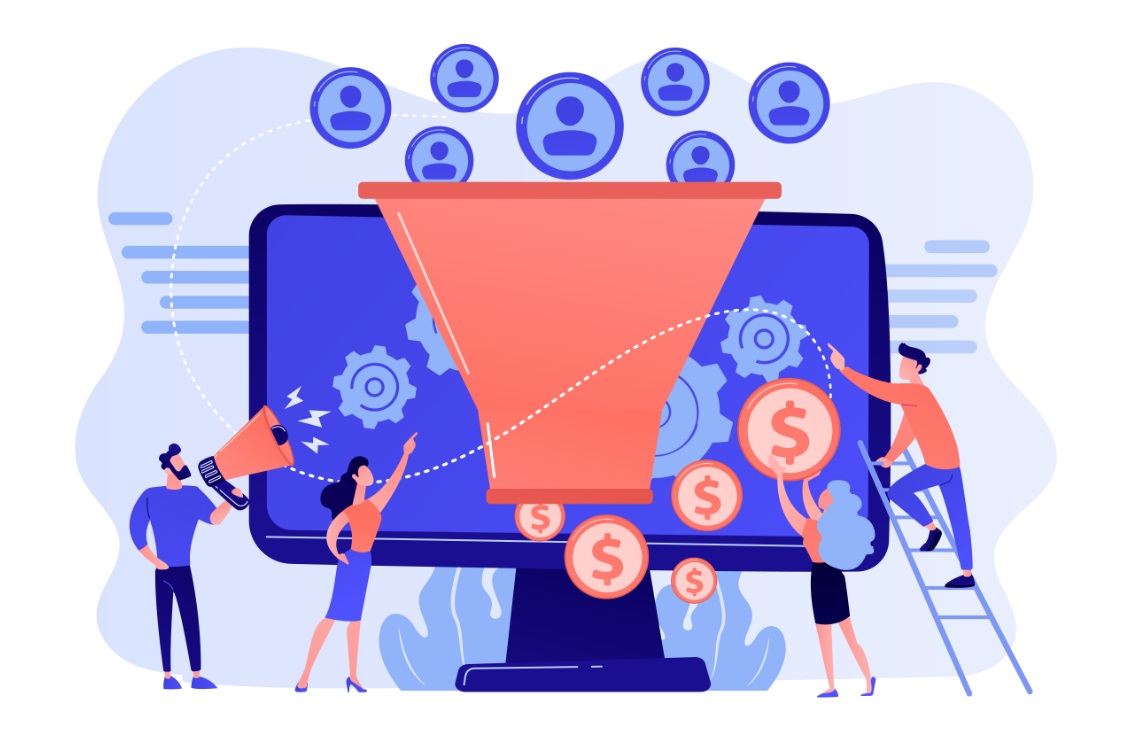
The lives of enterprises are growing increasingly tough as people’s lifestyles change. People are increasingly turning to internet retailers to meet their needs, resulting in increased market rivalry.
Continuous conversion funnel and conversion rate optimization have become critical for the successful functioning of online enterprises, which is no longer as simple as it may appear.
Don’t worry, you can learn how to perform this optimization procedure quickly and easily with the help of heatmap tools in the sections below.
A few words about the conversion funnel
The conversion funnel depicts the journey from a casual visitor to a paying customer. Consider it a funnel or filter through which all of your visitors pass, with just the consumers emerging at the other end.
It’s vital to remember that just 4-9% of your visitors will make it to the end of the funnel on average, so don’t be alarmed if your measures reveal that you have considerably fewer customers than visitors. This is very normal.
There are three parts of the conversion funnel:
However, various tactics must be used in each part. It makes no difference whether you use a top-down or bottom-up marketing strategy or analytic procedure.
If you don’t take these factors into consideration, you’ve already committed the most basic mistake in the optimization process.
You can find a different segment in each stage.
Simple visitors are found in the top funnel. They may have arrived with the goal of making a purchase, but they could also want to read your blog post. Of course, even if they didn’t mean to, you want them to purchase from you.
Because this stage comprises a huge number of people, you must pay special care to pique their interest and establish confidence. You risk failing at the first hurdle if you don’t examine these variables.
People that are interested in your goods and are familiar with you and your purpose are generally present in the middle part. This is one of the most difficult assignments since it has the highest chance of failure.
Information retrieval is frequently the most important aspect of this stage of the conversion funnel. Your prospective clients will compare you to your competition and seek reviews and information.
People that wish to buy your goods are in the bottom funnel. They have already made a choice, nevertheless, a terrible action might cause them to reconsider.
Here, strive for genuineness. You must structure everything so that potential purchasers are not put off from making a purchase.
But how you can optimize these stages? What analytics tool do you have to use and how?
Let’s see the answer.
Heatmap tools in the optimization process
Let’s take a look at how it works in practice now that we’ve gone over the basic components and functionalities.
Continuous measuring is a necessary aspect of the procedure. Unfortunately, the procedure cannot be carried out successfully without it.
When you think about analytics, you probably think of a big chart or a lot of statistics, but you’ll need a far more creative and efficient approach here. Heatmaps are a good way to do this.
Heatmap analysis is a method for determining how effective a website is. You may use heatmaps to see how your visitors interact with your website, which subpages they visit, and which buttons they click.
Warm colors indicate high-performing areas of your website, whereas cold colors indicate low-performing elements. If you want to optimize your conversion funnel, you’ll need this information.
But, because you’re probably curious about how heatmap tools may be used in the optimization process, let’s get right in.
Upper funnel part
You must reach three elements at the top of the funnel:
- A structure that is visible
- Content of high quality
- Personal information
Let’s get this party started. You must offer your website a clear structure in order for your visitors to spend more time on it and not depart after a few seconds.
We suggest that you examine the most popular portions of your website with heatmaps and then put each of the key subpages accordingly. This is significant because you may post them in a location where your visitors will be likely to locate them.
Also, keep in mind that these visitors will most likely arrive at your landing page first. You must only list subpages that are relevant to the upper funnel group.
Using heatmaps to discover these might also be a useful approach to do so since the analysis will reveal which pages you visit frequently. You can rely on this information.
You should disclose as much information about yourself as possible at this point of the conversion funnel. You should be able to tell who you are, what your aim is, and what you’re dealing with right away on the landing page.
By doing so, you establish trust and assist your visitors in becoming prospective clients from the start. But where should you store this data?
Don’t worry, a heatmap will tell you all you need to know.
When it comes to optimizing your upper funnel, one last thing to think about is displaying high-quality content. Based on the facts you provide, visitors may figure out what you’re doing and how you evaluate your items. But how can they be sure it’s true?
Share some blog post data about you and your items on your landing page to give your visitors the impression that you’re speaking the truth.
If you don’t want this to happen, create a subpage on your blog where your readers may find these articles.
Feel free to utilize a heatmap to assist you to put this as well, since this will allow you to place your blog’s subpage in the best possible location.
As you can see, improving the top of your conversion funnel is a quite involved procedure. However, don’t panic you’ve already completed the most difficult of the three sections.
Middle funnel part
The deeper down the conversion funnel you go, the more specialized work you’ll have to undertake. This implies that while the number of jobs you have will reduce, you will have to cope with an increasing number of them.
Visitors have already turned into prospective consumers by the time they reach the middle stage. In this step, the most crucial thing is to persuade them to buy your goods.
In this instance, there are two little things you should keep in mind:
- Your products’ location
- Building a foundation of trust
Use heatmap tools to make some basic analysis before you cut into it.
Determine which of your items is the most popular. Put these items or services near the top of your subpage so that potential purchasers don’t have to scroll too far to locate them.
We have the items and have been provided everything we need to purchase them. What may the issue be?
The danger. When making purchases, keep in mind that this influence is constantly there.
Make a scroll heatmap analysis of your website and put customer reviews depending on the measurement to remove this.
The scroll heatmap displays how long customers spend scrolling across your website, allowing you to strategically post reviews. This will lower the perceived risk and make it easier for your goods to be added to the cart.

Lower funnel part
Your product is already in the cart at the bottom of the funnel. The only thing that separates a potential buyer from being a buyer is this one stage. What kind of issue might arise?
If a potential buyer refuses to buy or cannot pay, the response is straightforward.
In the study of the cart, the use of heatmap tools is quite important. Examine how your customers utilize your cart, where they frequently click, and what they do.
Based on this data, you can set the payment CTA in the appropriate location and provide a clear, safe structure to your cart. If you want your conversion funnel to be well-optimized, these criteria are critical.
Also, make sure to include cash-on-delivery, as some consumers are still wary of online payment methods.
Conclusion
Heatmap tools are used throughout the conversion funnel optimization process, as you can see. Do not begin the procedure in any way unless you have this tool.
Other measuring methods, such as session replays, can, of course, be used in addition to a heatmap. This can also improve process efficiency.
We hope we can help.




